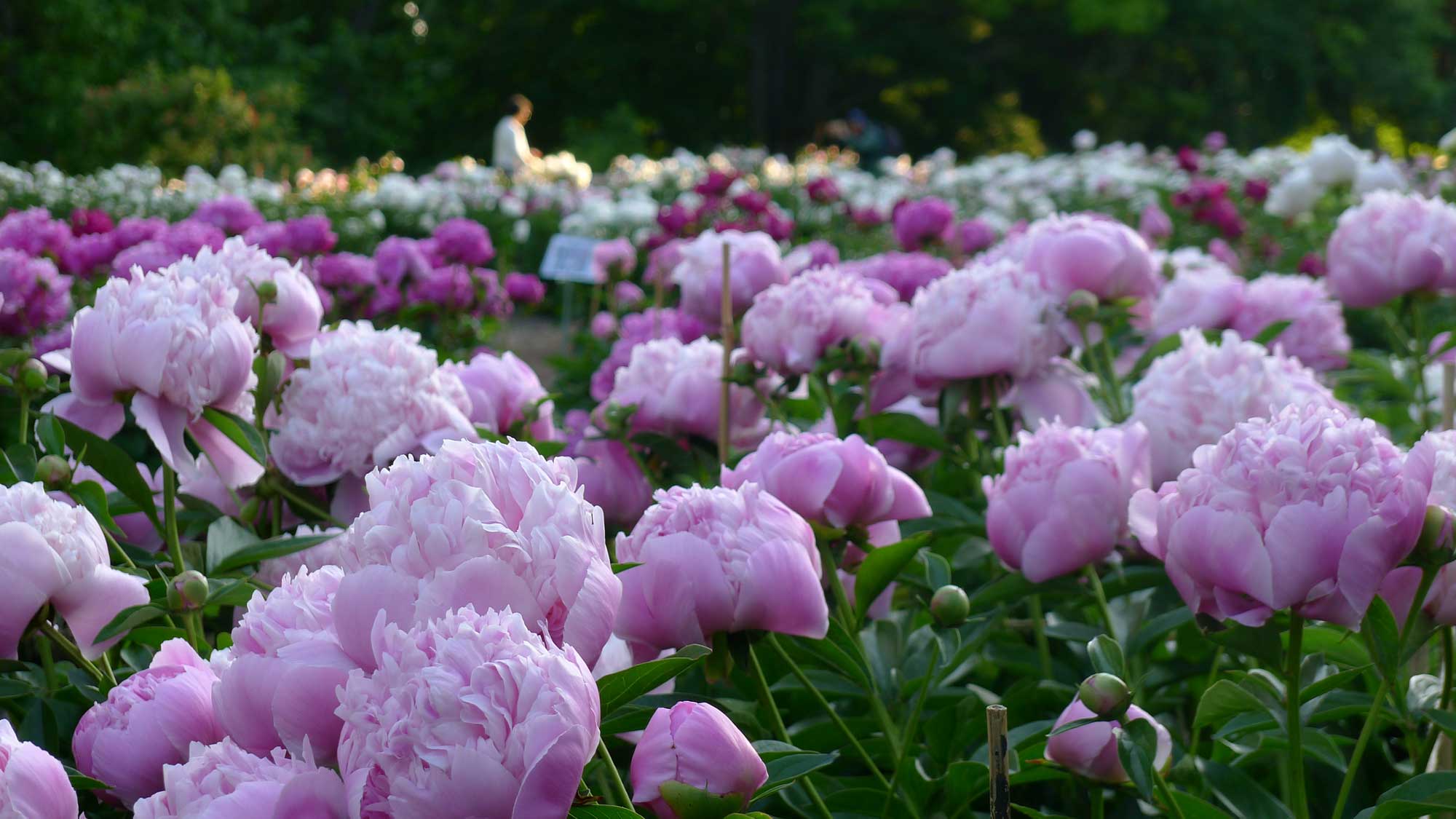by Joe Mooney
The University of Michigan’s Nichols Arboretum peony garden is about to undergo its annual transformation into a wave of white, pink and red as it bursts into nearly 10,000 blooms.
Well-known on campus and to Ann Arborites alike, the arboretum is home to the largest collection of heirloom herbaceous peonies in North America. Celebrating 95 years of perennial beauty, the peony garden offers a spring display from sunrise to sunset daily May 30-June 11 at Nichols Arboretum, 1610 Washington Heights in Ann Arbor.
New this spring are more than 70 varieties of vintage—pre-1950—herbaceous peonies, many of them long-missing from the original Arb plantings. These peonies add to the nearly 300 historic varieties from the 19th and early 20th century already growing in the main beds.
These heirloom peonies represent the best American, Canadian and European peonies of the era. The plants are arranged in 27 beds with each full bed containing dozens of peonies. The garden holds nearly 800 peonies when filled to capacity and more than 10,000 blooms during peak blossom time. Although a few peonies have no fragrance, the vast majority have a range of scents from delicate to bold.
Adding to the peony garden display are classic tree peonies from Asia, Europe and America. Tree peonies bloom two to three weeks earlier than herbaceous peonies, extending the bloom season significantly. They have woody stems and come in colors such as yellow and purple that are not usually seen in herbaceous peonies.
Some of the peonies are still growing in the same spot where they were planted nearly 100 years ago. The garden features peonies from the extensive collection of U-M alumnus W.E. Upjohn, founder of the Upjohn Company in Kalamazoo, Mich., as well as exceptional selections from nationally recognized experts.
Spring weather dictates peony bloom season. Bloom time typically begins around the end of May and peaks in early June. For the full story of this garden, and the multiyear renovation to transform it into an internationally recognized destination, reference collection, and conservation model, visit peony.mbgna.umich.edu.

